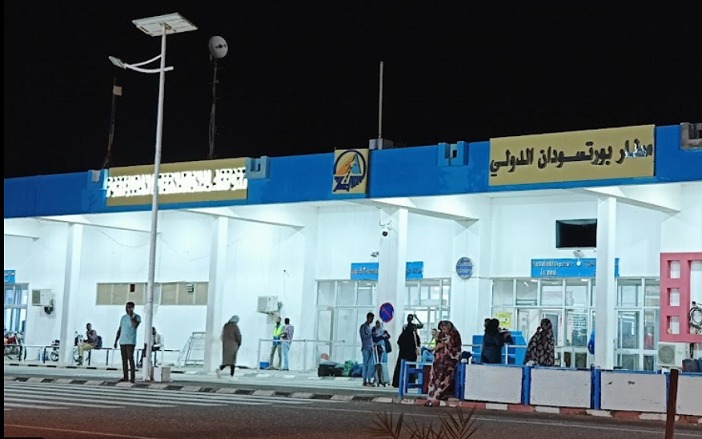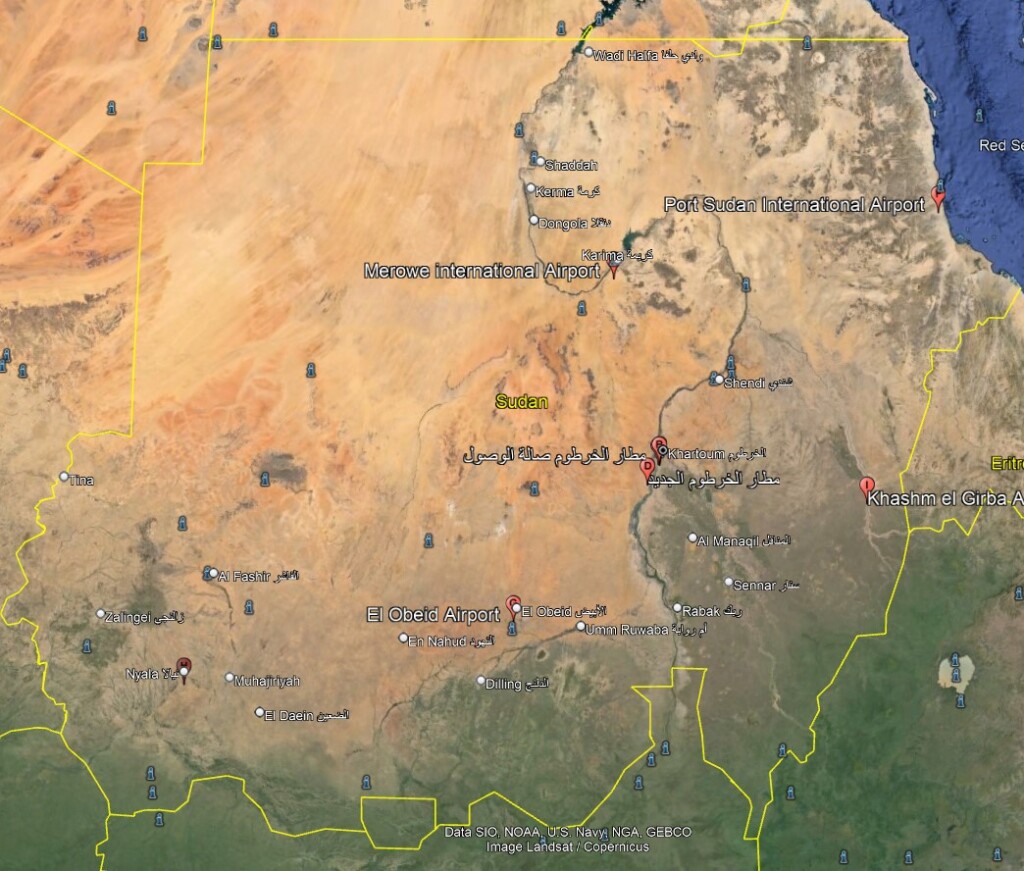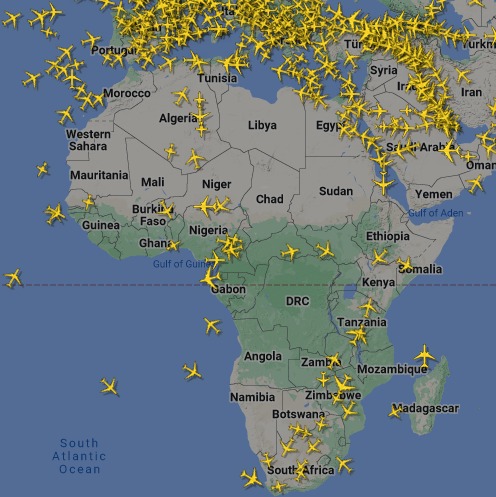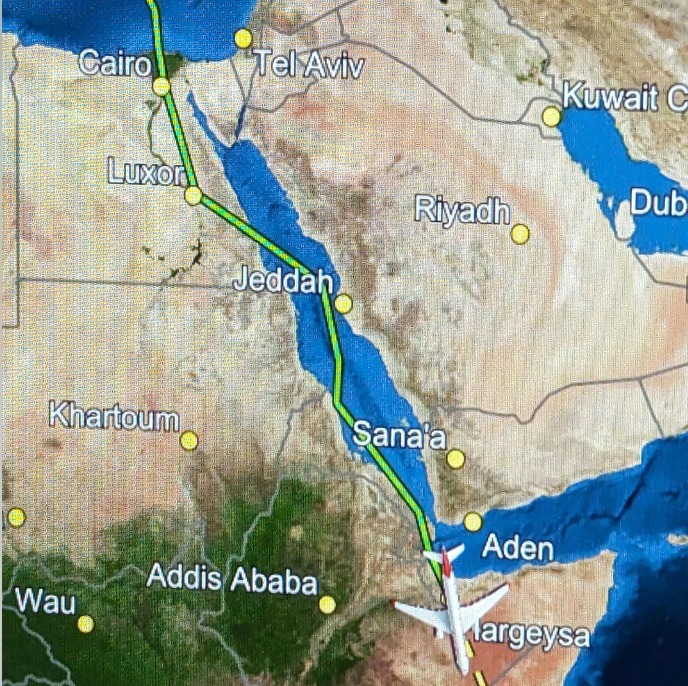Civil aviation: ‘Safe air path’ opens in Eastern Sudan

Port Sudan Airport (Photo: Google Street View)
The Sudanese Civil Aviation Authority has issued a pilots’ bulletin (NOTAM) through the regional office of the International Civil Aviation Organisation in Cairo, opening the eastern route to air traffic, effective tomorrow, Wednesday, July 31. This comes more than 15 months after the decision to completely close Sudanese airspace was issued on the morning of the outbreak of the war on April 15, 2023.
The decision means opening the airspace of the three eastern Sudanese states (Red Sea, Kassala and El Gedaref) to air traffic via the entry point in Halaib to Port Sudan and Tokar, providing a short and safe air path for flights coming from Europe to East African countries and some islands in the Indian Ocean.
Khartoum Airport, where the Civil Aviation Authority and the Air Navigation Control Centre are located, was the first site to be attacked by the Rapid Support Forces, including targeting the headquarters of the Armed Forces Command, the Presidency of the Security Service, Khartoum Air Base, and the Airport District, where senior army officers reside, which is adjacent to Khartoum Airport. The Civil Aviation Authority exempted air evacuation and humanitarian flights from the decision to close airspace.
NOTAMs
The Port Sudan government’s decision was issued via a Notice to Airmen addressed to the International Civil Aviation Organisation through its regional office in the Egyptian capital, Cairo. Officially known as Notices to Air Missions (NOTAMs), these are messages published by government air traffic control agencies to inform pilots of developments in air traffic conditions, air traffic infrastructure and surrounding areas. In addition to warning of dangers, these notices are used to identify areas that are temporarily prohibited from flying and in cases of lifting decisions to completely or partially close a country’s airspace.
Legally, airspace control procedures are based on the International Convention on Civil Aviation. This convention recognises the full sovereignty of states over their airspace and therefore no airline may carry passengers, cargo or mail through the airspace of another state or land on its territory without special permission from the state concerned in accordance with the International Convention of the International Civil Aviation Organisation.

Safe flight paths
The decision means opening the airspace of the three eastern Sudanese states (Red Sea, Kassala and El Gedaref) to air traffic via the entry point in Halaib to Port Sudan and Tokar. The decision means providing a short and safe air path for flights coming from Europe to East African countries and some islands in the Indian Ocean.
Air routes are determined in consultation with Sudan’s neighbouring countries, noting that until the outbreak of war in April last year, the Air Navigation Management Centre at Khartoum Airport was the one managing air traffic for South Sudan, which did not have sufficient equipment to perform this task.
It is important to note that Port Sudan Airport will be the alternative centre for managing Sudanese airspace, which gives the airport additional importance at the present time and even in the future, as it is not unlikely that the airport will lose its new role after the end of the war.

More than 100 flights per day
Under normal circumstances, until 2016, the number of flights crossing Sudanese airspace did not exceed 70 flights at best. However, in 2017, the Sudanese Civil Aviation Authority opened three new air routes to meet the significant increase in air traffic in the Middle East, which is considered the fastest growing region in the world. This allowed the number of flights crossing the airspace to increase to between 150 and 200 flights per day, which helped reduce flight times and the cost of transporting passengers and goods by very significant percentages.
To increase air traffic management capacity and reduce flight delays, the Civil Aviation Authority completed in 2020 a project to install 6 modern navigation radars in Khartoum, Dongola, Ad-Damazin, El Fasher, El Geneina, Nyala, and Port Sudan and connect them to the Air Navigation Centre.
The reopening of air routes in eastern Sudan is expected to allow about 100 flights per day to cross between Europe and East African countries, after these aircraft had been forced throughout the past period to avoid crossing Sudanese airspace and enter via two routes.
The first route is from the south through the lands of South Sudan, then Chad, and then to Europe via any of the ports in North Africa to the European continent, depending on its final destination. This increases the travel time by between one and two hours, depending on the country of origin.
Another route passes through Ethiopia and Eritrea, then crosses the Red Sea to fly parallel to Saudi Arabia, then crosses the Red Sea towards Egypt and continues the journey via the traditional route, which increases the flight time by about an additional hour, regardless of the country of origin.

Huge financial revenues
Airspace management provides a major financial source for any country, including Sudan. Despite the limited number of civil aviation flights arriving and departing from Sudan compared to neighbouring countries such as Egypt, Ethiopia, Saudi Arabia and Kenya, the movement of aircraft crossing the airspace remains a major source of income in hard currency.
We note here that following the fall of the regime of General Omar al-Bashir, it became clear that all revenues from airspace transit fees and services provided by the Civil Aviation Authority for air traffic were directed to a special bank account in Geneva, away from the supervision of the Ministry of Finance, to be spent by people close to the presidency of the republic and spent in unknown areas and in a complete absence of transparency and supervision.
Sudanese economic circles estimate the total revenues of the Civil Aviation Authority at around $160 million annually, but the lack of transparency in managing its revenues and placing it under the authority of the Ministry of Defense leads some to question this modest amount. Some estimate the real revenues at around $800 million annually without it being possible to verify either of them. It is worth noting that the International Civil Aviation Organisation encourages allocating 15% of civil aviation revenues to develop infrastructure.











 and then
and then